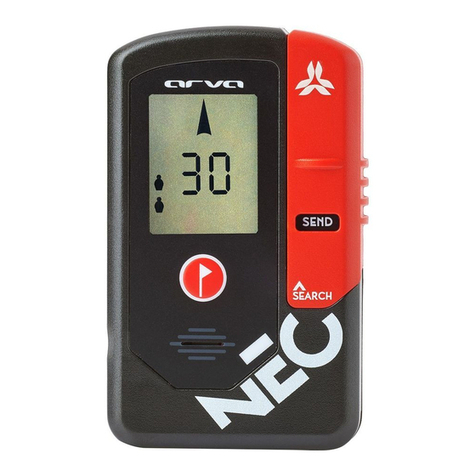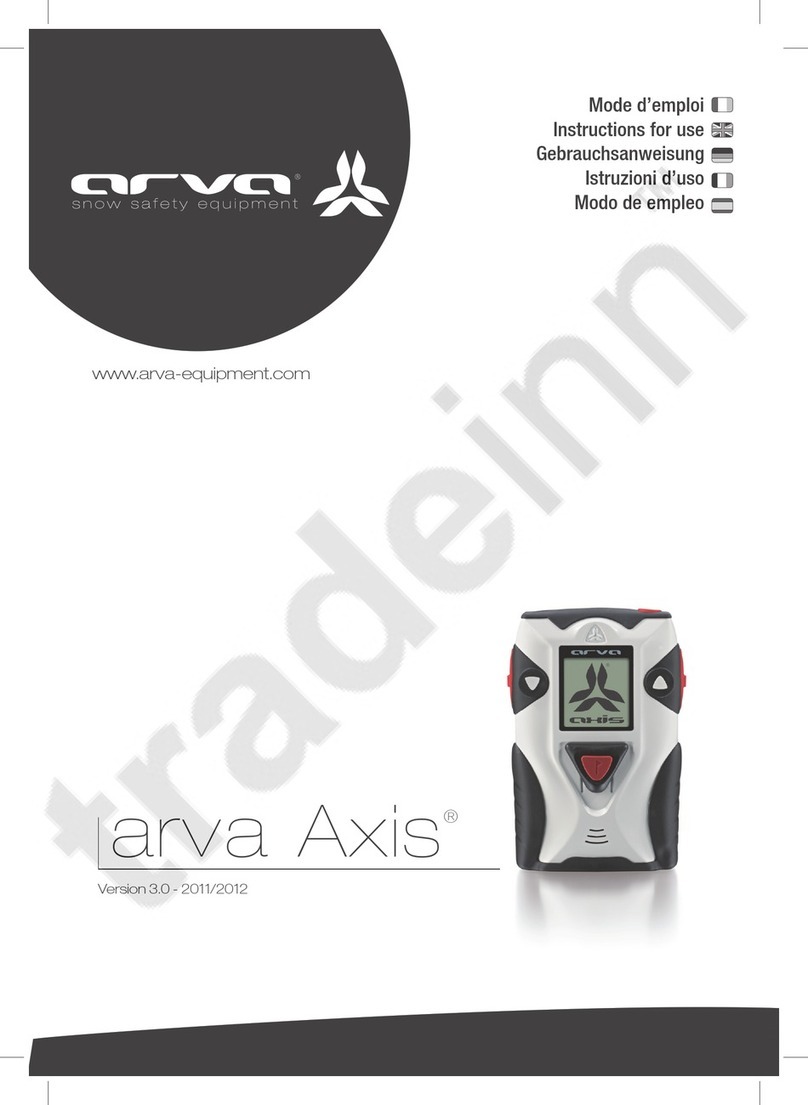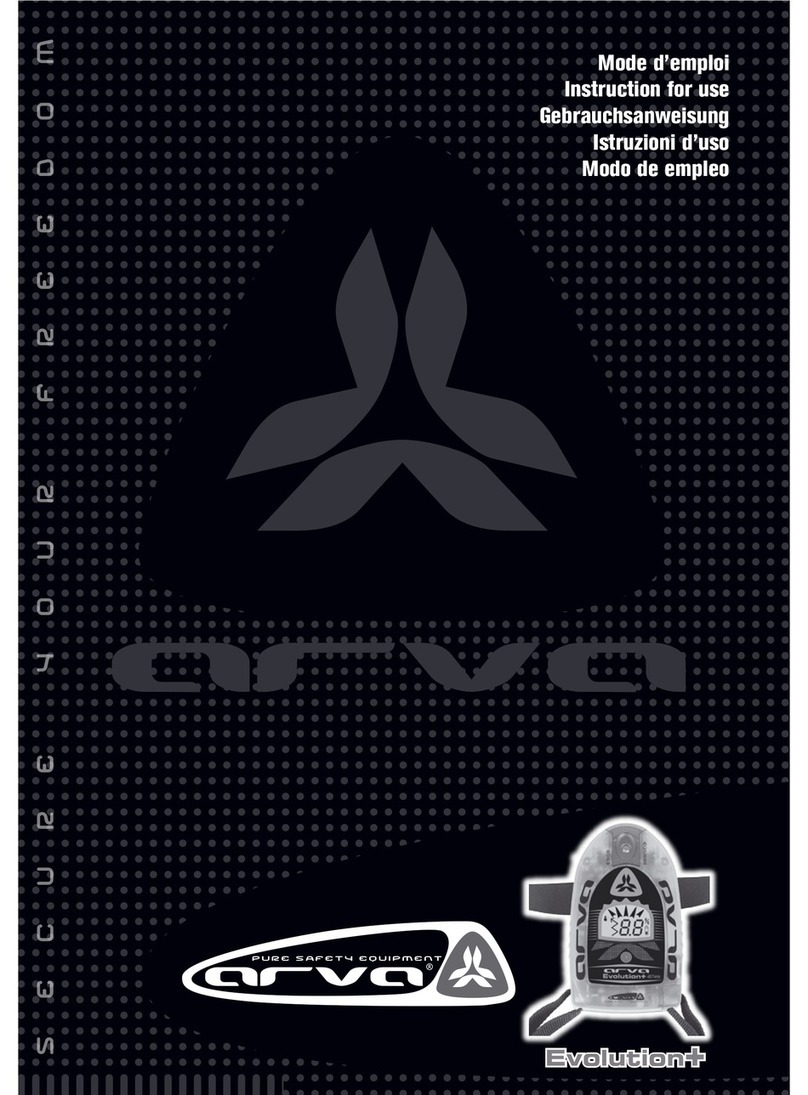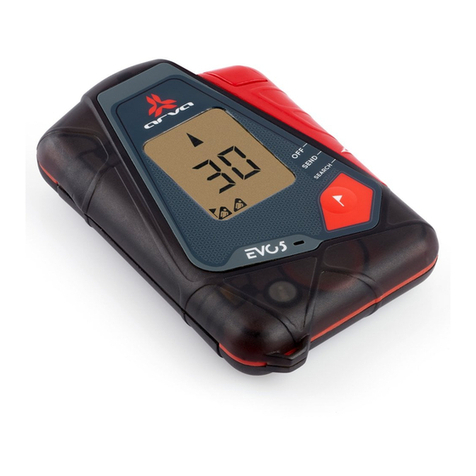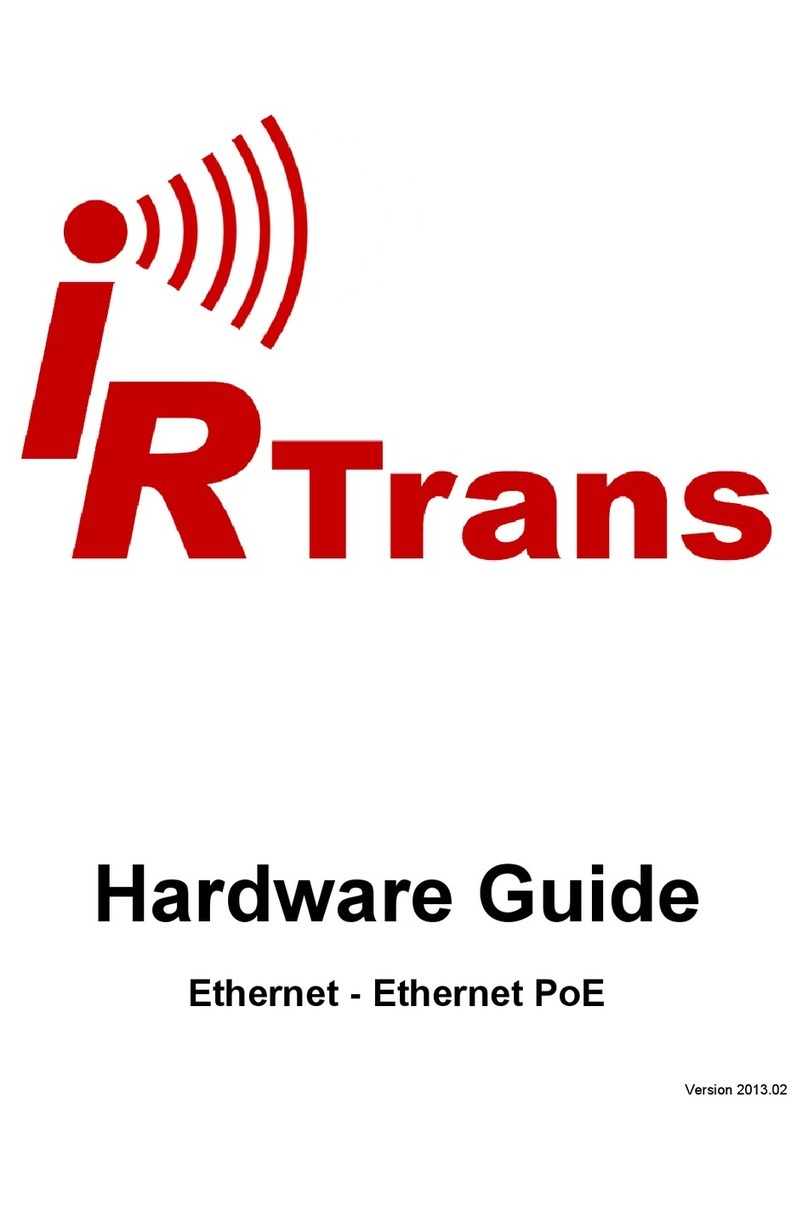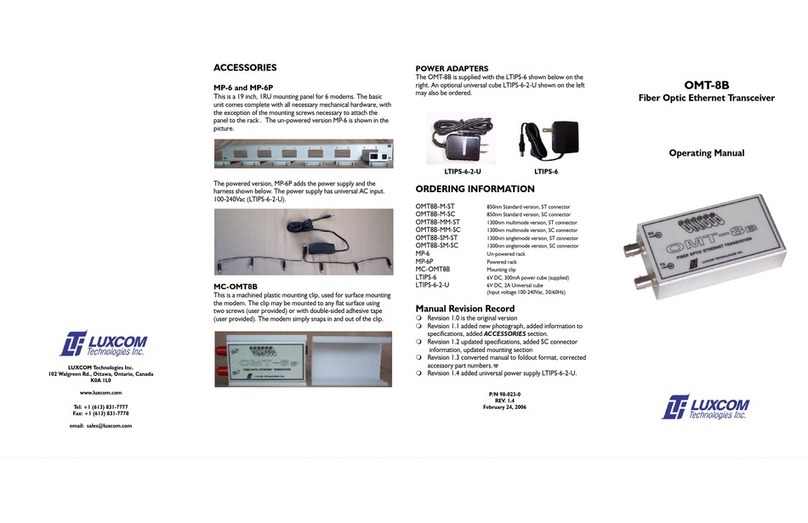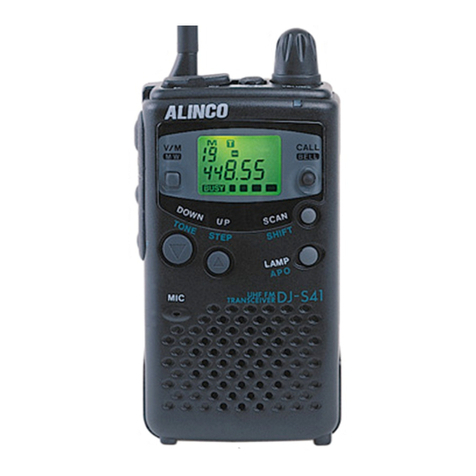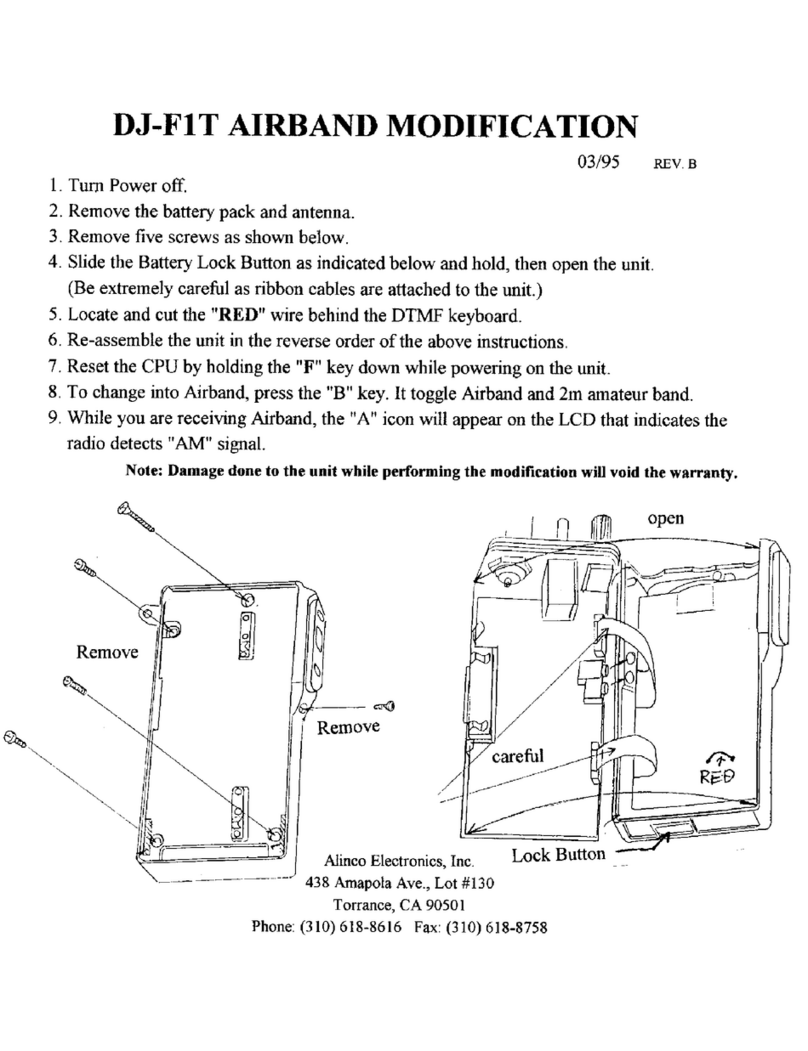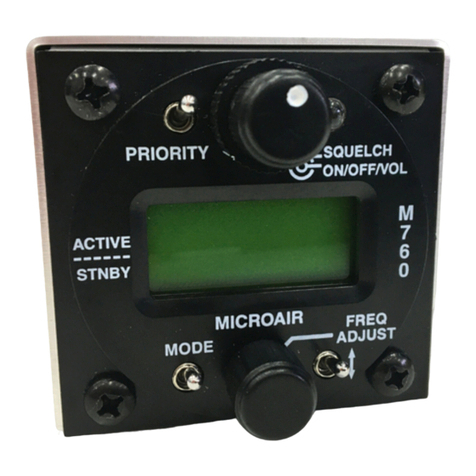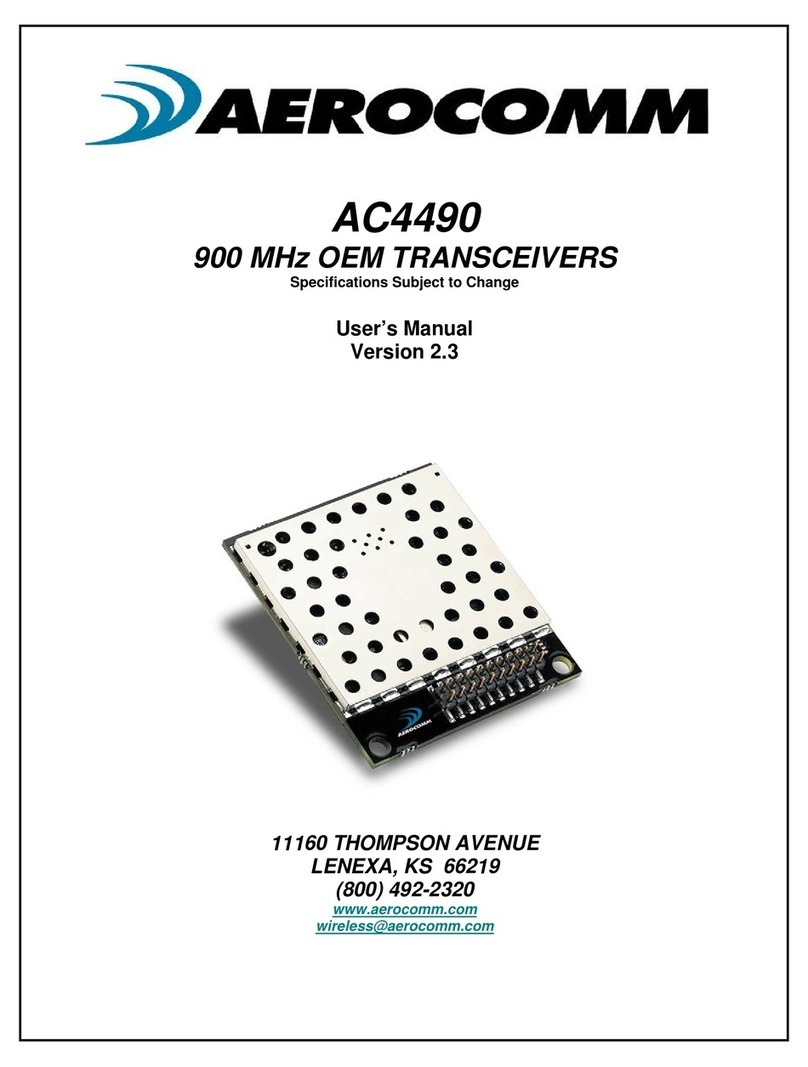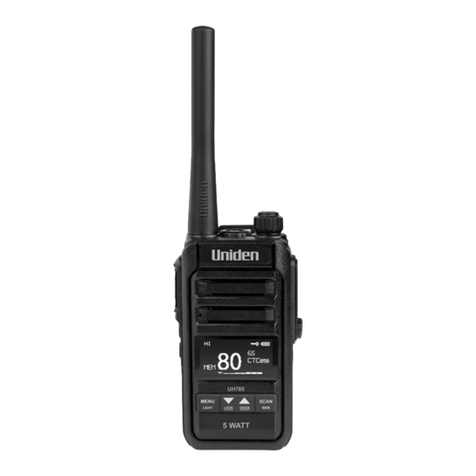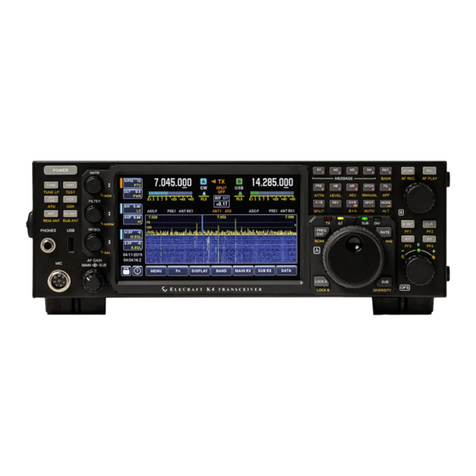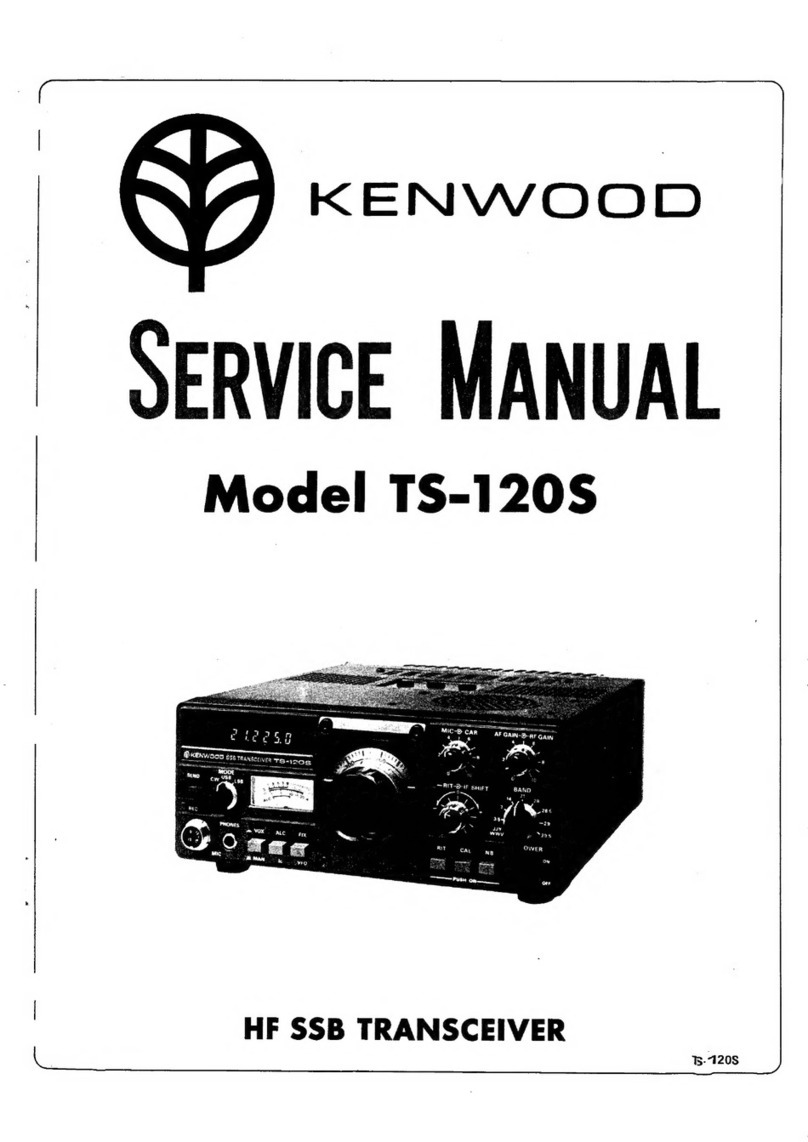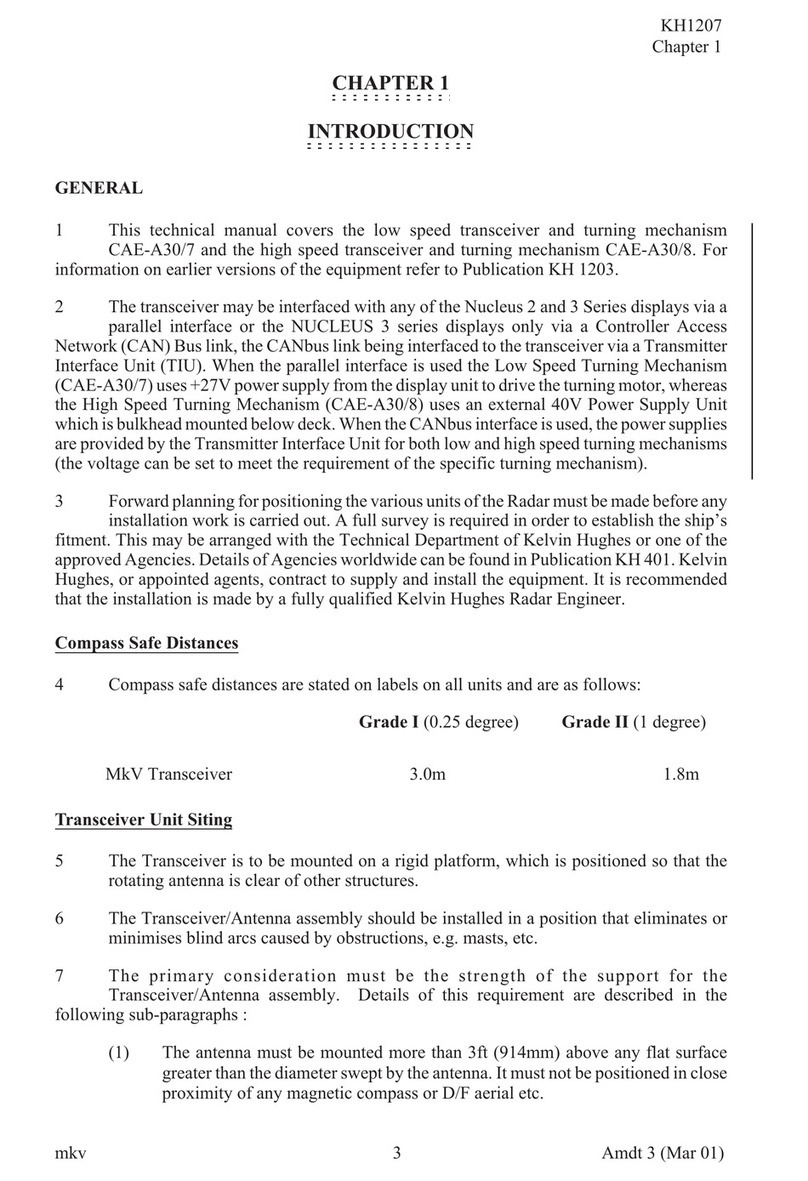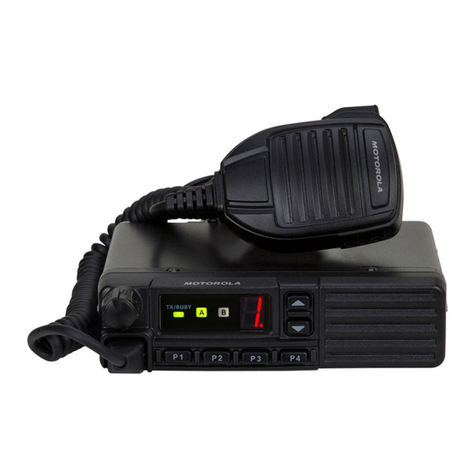ARVA EVO4 User manual

USER MANUAL
MODE D’EMPLOI
INBETRIEBNAHME
GUIDA INTRODUTTIVA
GUÍA DE UTILIZACIÓN
KÄYTTÖOHJE
BRUKERMANUAL
ANVÄNDARMANUAL
取扱説明書


2
SEARCH / TRANS-
MIT BUTTON
MARKED
VICTIM BUTTON
ON/OFF BUTTON
TECHNICAL FEATURES
• 100% digital
• 3 antennas
• Distance and direction indicator
• Marking function for multiple burials
• An icon for 1, 2, 3 or more victims
• 40 m search bandwidth
• 240 g
• Battery life: 250+ hours
• Requires 4 alkaline AAA/LR03 batteries
• Group Check
• Storage temperature range: -20 °C to +70 °C
• Operating temperature range: -20 °C to +45 °C
• Maximum altitude to function properly: 10 000 m
• Avalanche beacon / Frequency band : 456.9 - 457.1
kHz
• Avalanche beacon / Maximum power used :
H-Field < 2.23 µA/m @ 10 m

3
PRACTICE:
Practicing and being well-trained in using your transceiver
is essential in order to conduct a successful search in the
event of an avalanche.
RESPONSABILITY:
Skiing off trail or skiing in the backcountry are activities
that present inherent risks. Wearing a transceiver should in
no way influence your decision making when in avalanche
terrain. Know when to turn around.
STORAGE:
Store your device in a cool and dry place. Remove the
batteries when storing for long periods of time. The device
is no longer under warranty if the batteries leak.
WARRANTY:
Your device has a 5-year warranty. We recommend sending
your transceiver in for maintenance on a regular basis:
once every 3 years for amateurs, and once every two years
for professionals.
REGISTRATION AND UPDATES:
Every ARVA transceiver has a unique identification number.
Registering your device on www.arva-equipment.com allows
us to link your contact information your device to for optimal
tracking (maintenance, customer service, software updates,
etc.).
BATTERIES:
The ARVA transceiver only operates with 4 standard Alka-
line AAA/LRO3 batteries. Do not use rechargeable or lithium
batteries. The batteries should all be replaced at the same
time. The label in the battery compartment is important for
all servicing procedures, do not remove it.
IMPORTANT FOR SWITZERLAND: APPENDIX 4.10 FOR STAND-
ARD SR 814.013 APPLIES TO BATTERIES.
CAUTION: THERE IS A RISK OF EXPLOSION IF THE BATTERY
IS THROWN INTO A FIRE OR REPLACED BY THE WRONG TYPE
OF BATTERY. FOLLOW INSTRUCTIONS ON HOW TO PROPERLY
DISPOSE OF USED BATTERIES.
EN

4
INITIAL START-UP
1-“CLIP FOR SAFE”
Once you are wearing your transceiver, it automatically
turns on as soon as you connect the strap. This is a simple
and easy way to be 100% certain that your ARVA is working
as soon as you start your outing. For more advance users
(professionals) who do not want to use the clip for safe
feature, a special holster is available for purchase as an
accessory.
2-WEARING THE DEVICE
Your ARVA must always be worn on top of your base layer.
Your ARVA should always be covered by at least one layer
of clothing to protect it from the cold and impacts.
3-BATTERY CHECK
Just after turning on your device, it will indicate the battery
level. We recommend that you replace the batteries as soon
as they drop below 50%.

5
GROUP CHECK SIGNAL SEARCH
SEARCH MODE
To switch to search mode, push the
S/T button up with your thumb.
• The Group Check function allows the
group leader to verify that all other
transceivers are working properly.
• To enter Group Check mode, press
the marking button within 5 seconds
after turning on the device (in transmit
mode).
• The device will verify all transmitting
signals within a 0.5 to 1.5 meter radius,
and emit a beep to confirm that they
function properly.
• To exit Group Check mode, press the
marking button.
Start searching for a signal based on one
of the two diagrams below.
Slowly rotate back and
forth to try to detect the
signal(s).
To maximize the range of your ARVA :
It is important to point your ARVA in the
direction of the avalanche, parallel to the
slope and not pointing upwards towards
the sky.
EN

6
During the coarse search :
• Carefully follow the distance and
direction indicators on the screen
• Point the device in the direction of the signal
Once within 3 meters of the victim, your ARVA no longer
indicates a direction and you must start bracketing (search-
ing in a cross pattern).
• In a complex situation with multiple victims, the device
may have trouble analyzing the signal. In this case, move a
few steps away and then return towards the critical point
by following another direction.
It is then much quicker to start probing once you have de-
fined the probable burial zone within a less than one-meter
range.
• Search in a calm and
focused manner.
• Slow down as you ap-
proach the fine search.
• If the displayed distance
starts to increase even
though you are moving in
the direction indicated by
the arrow, turn around.
1. Lower your device to near
snow level.
2. Move your device in a cross
pattern to locate the point
where the distance reading is
the lowest.
DURING THE SEARCH, PAY ATTENTION TO VISUAL CLUES
SUCH AS POLES, SKIS, CLOTHING, ETC.
COARSE SEARCH
FINE SEARCH

7
MARKING FUNCTION
To mark the victim, press on the
“marking” button. The device will
switch to victim B.
A
B
When you are less than
3m from the first victim
you have the option of
marking the location
in order to continue
searching for another
signal. In the illustration
example, you can mark
victim A.
Example of
fine search
technique
•
1er point
de sondage
Victims appears on the left part of your
screen. When a victim is marked a flag
appears close to it. The + indicate that
there is 3 or more victims.
MULTIPLE VICTIMS INDICATED
EN

8
The V-shaped conveyor
technique allows you to
optimize the excavation
phase of shoveling.
As soon as the person
is uncovered, it is
important to turn their
transceiver off imme-
diately.
Search for the victim
by probing in concen-
tric spirals progressive-
ly away from the min-
imum distance point
detected by your ARVA.
Probe perpendicular to
the slope.
Statistically, shoveling takes at least as much time as the
ARVA search. It is important to take a methodic approach to
shoveling.
Certain electronic devices as well as electrical and elec-
tromagnetic installations can significantly interfere with
transceiver signals.
These sources are:
• carried: smart phone - analog radio - camera - heart rate
monitors - GPS - etc.
• permanent: relay towers - power lines / electrical generat-
ing equipment - ski lifts, etc.
In order to reduce the risk of signal deterioration, we rec-
ommend that you keep your transceiver as far as possible
from sources of electrical and electromagnetic activity.
INTERFERENCE
PROBING
SHOVELING

9
IN SEARCH MODE:
Move all metallic and electronic devices at least 50cm
away from your transceiver.
During an active search, we recommended turning off all
devices except:
• Analog radio
• Headlamp without dimmer
• Watch without a radio function
• Backup devices in the event of a secondary avalanche
Means of communication:
We recommend turning off all digital telephones and radios
during the active search phase. All calls should be made at
least 25m away from the individuals conducting the active
search.
IN TRANSMIT MODE:
Move all metallic and electronic devices at least 20cm away
from your transceiver.
Disposal of electronic instruments by users from private house-
holds in the European Union. This symbol stamped on the prod-
uct or its packaging indicates that the product is not allowed to
be disposed of with household waste. It is your responsibility to
bring your electronics waste to a designated recycling office for
proper disposal. Separate disposal and recycling of your waste
will contribute to preserving our natural resources and ensure
an environmentally-friendly disposal safer for public health. For
more information regarding the closest recycling center to your
residence, contact your local city hall, waste management com-
pany, or the store where you purchased the product.
EN

10
BOUTON ÉMISSION
/ RÉCEPTION
BOUTON MARQUAGE
BOUTON
ON/OFF
CARACTÉRISTIQUES TECHNIQUES
• 100% numérique
• 3 antennes
• Indicateurs de direction et de distance
• Fonction marquage de victimes
• Indication 1, 2, 3 victimes ou +
• Largeur de bande de recherche 40 m
• 240 g
• Autonomie + de 250 heures
• Alimentation 4 piles alcalines AAA/ LR03
• Group Check
• Plage de températures de stockage : -20 °C à +70 °C
• Plage de températures d’utilisation : -20 °C à +45 °C
• Altitude maximum d’utilisation : 10 000 m
• Détecteur de victimes d’avalanche / Bande de
fréquences : 456.9 - 457.1 kHz
• Détecteur de victimes d’avalanche / Puissance maxi-
mum : H-Field < 2.23 µA/m @ 10 m

11
ENTRAÎNEMENT:
S’entrainer et bien connaitre son appareil est indispensable
pour réussir une recherche en cas d’avalanche.
RESPONSABILITÉ:
Le ski hors-piste ou le ski de randonnée sont des activités
à risque. Le port d’un ARVA ne doit en aucun cas affecter
votre prise de décision dans des zones à risque. Sachez
renoncer.
STOCKAGE:
Stocker votre appareil dans un endroit tempéré et aéré.
Enlever les piles en cas de stockage longue durée, aucune
garantie n’est accordée si les piles ont coulées.
GARANTIE:
Votre appareil est garanti 5 ans. Il est conseillé d’effectuer
une révision tous les 3 ans pour les particuliers ou tous les
2 ans maximum pour les professionnels.
ENREGISTREMENT ET MISE À JOUR:
Les ARVA sont tous identifiés par un numéro unique. L’en-
registrement sur www.arva-equipment.com nous permet
d’associer votre contact avec votre appareil et d’en garantir
la bonne traçabilité (révision, procédure SAV, mise à jour
logiciel, etc.).
PILES:
L’ARVA fonctionne avec 4 piles Alcaline LR03. Ne pas utiliser
de piles rechargeables ou lithium. Changer toutes les piles à
chaque fois. L’étiquette au fond de la trappe pile est impor-
tante pour les procédures SAV, ne pas l’enlever.
Important Suisse: L’ANNEXE 4.10 de la norme SR814.013
est applicable aux batteries.
ATTENTION: Il y a risque d’explosion si la batterie est lancée
dans le feu ou si elle est remplacée par une batterie de type
incorrect. Mettre au rebus les batteries usagées conformé-
ment aux instructions.
FR

12
MISE EN ROUTE
1-“CLIP FOR SAFE”
A partir du moment où vous portez votre appareil, il se met
automatiquement en marche lorsque vous connectez la
sangle. Un moyen simple et efficace d’être sûr à 100% que
l’ARVA est en fonctionnement dés que vous commencez
votre sortie. Pour les utilisateurs avancés (pros) ne
souhaitant pas la configuration clip for safe, un holster
spécifique est disponible en accessoire à la vente.
2-PORT DE L’APPAREIL
L’ARVA doit toujours être porté sur la première couche de
vêtements. L’ARVA doit, de préférence, toujours être recou-
vert d’un vêtement pour éviter le froid et les chocs.
3-CONTRÔLE NIVEAU PILES
Juste après l’allumage de votre appareil, celui-ci indique le
niveau de batteries. Nous vous conseillons de les remplacer
dès que vous descendez en
dessous de 50%.

13
GROUP CHECK RECHERCHE DU SIGNAL
MODE RECHERCHE
Pour basculer en mode réception,
poussez le bouton E/R vers le haut
avec votre pouce.
• La fonction Group Check permet
au chef de groupe de tester le bon
fonctionnement des appareils de ses
coéquipiers.
• Pour entrer en mode Group Check,
appuyez dans les 5 sec suivant
l’allumage ( en mode émission) sur le
bouton marquage.
• L’appareil contrôle les émetteurs
dans un rayon de 0,5 à 1,5 m, émettant
un bip sonore pour confirmer leur bon
état de marche.
• Pour sortir du mode Group Check,
appuyez sur le bouton marquage.
Évoluez sur l’avalanche à la recherche d’un
signal selon l’un des 2 schémas ci-dessous.
Vous pouvez légèrement
faire tourner votre poignet
dans le plan pour essayer
de capter tous les signaux.
Pour optimiser la portée de votre ARVA :
Il est important de pointer votre ARVA dans
la direction de l’avalanche, parallèlement à
la pente, et non vers le ciel.
FR

14
Pendant la recherche approximative:
• Suivez attentivement les indications
de distances et de directions à l’écran.
• Pointez l’appareil dans la direction du signal.
En dessous de 3 mètres votre ARVA ne vous
donne plus de direction, vous devez donc
passer en recherche en croix ou recherche orthogonale.
• Dans une situation multi victimes très complexe, l’appareil
peut avoir des difficultés d’analyse. Dans ce cas, n’hésitez
pas à vous éloigner pour revenir vers l’endroit critique en
suivant autre direction.
Il est ensuite plus rapide de commencer immédiatement à
sonder dès que l’on a défini la zone probable de localisation
avec une précision de moins d’un mètre environ.
• Déplacez vous de façon
calme et concentrée.
• Ralentissez lorsque vous
vous approchez de la
recherche fine.
• Si la distance affichée aug-
mente alors que vous vous
déplacez dans la direction
indiquée par la flèche, faites
demi-tour.
1. Abaissez votre appareil au
ras de la neige.
2. Déplacez votre appareil de
façon orthogonale pour le
placer à la verticale
de l’endroit où l’indication de
distance est la plus faible.
DURANT LA RECHERCHE, IL EST INDISPENSABLE DE REST-
ER ATTENTIF AUX INDICES VISUELS TELS QUE BÂTONS,
SKI, VÊTEMENT, ETC.
RECHERCHE APPROXIMATIVE
RECHERCHE FINE

15
FONCTION MARQUAGE
Pour marquer la victime, appuyez
sur le bouton « marquage ». L’appareil
bascule alors sur la victime B.
A
B
Lorsque vous vous
trouvez à moins de 3 m
de la première victime,
vous avez la possibilité
de marquer son em-
placement afin de pas-
ser à la recherche d’un
second signal. Dans
le cas de l’illustration,
vous pouvez marquer la
victime A.
Exemple
de circuit de
localisation
•
1er point
de sondage
Les icônes à gauche de votre écran sym-
bolisent les victimes. Lorsque vous
marquez une victime, un drapeau appa-
raît à côté de celle-ci. Le + indique qu’il y
a plus de 4 victimes.
INDICATION MULTI-VICTIMES
FR

16
La technique de
pelletage en V permet
d’optimiser cette phase
de dégagement. Dès
que la personne est dé-
gagée, il est important
d’éteindre son ARVA le
plus vite possible.
Recherchez la victime
en vous éloignant
progressivement du
dernier point détecté
avec votre ARVA.
Sondez perpendicu-
lairement à la pente.
Statistiquement le temps de pelletage est au moins aussi
long que le temps de recherche avec l’ARVA. Il est donc
important de s’organiser pour la phase de pelletage.
Certains appareils electroniques ainsi que certaines instal-
lations electriques et electromagnétiques peuvent brouiller
sensiblement les signaux des DVAs.
Ces sources sont:
• embarqués: Smartphone - Radio analogique - Caméra -
Cardiofréquence mètre - GPS - etc.
• fixes: Antennes relais - lignes à haute tension/ alimenta-
tions éléctriques - RM - etc.
Afin de minimiser les risques de détèrioration des signaux,
nous vous recommandons d’éloigner autant que possible
les sources d’activité électriques et electromagnétiques de
votre appareil de recherche.
PERTURBATIONS
SONDAGE
PELLETAGE

17
EN RÉCEPTION:
Éloigner d’au moins 50 cm tous ces appareils métalliques et
électroniques du DVA.
Il est conseillé pour les personnes en recherche active
d’éteindre tous les appareils sauf :
• Radio analogique
• Lampe frontale sans variateur auto
• Montre sans fonction radio
• Appareils de back up en cas de suravalanche
Moyens de communication:
Il est conseillé d’éteindre les téléphones et les radios
numériques lors de la recherche active. Tous les appels
doivent être passés à au moins 25m des personnes en
recherche active.
EN ÉMISSION:
Éloigner d’au moins 20 cm tous les appareils métalliques et
électroniques du DVA.
Élimination des déchets par les utilisateurs dans les ménages privés
au sein de l’Union Européenne. Ce symbole sur reproduit ou sur son
emballage indique que ce produit ne doit pas être jeté avec vos autres
ordures ménagères. Au lieu de cela, il est de votre responsabilité de
vous débarrasser de vos déchets en les apportant à un point de col-
lecte désigné pour le recyclage des appareils électriques et électron-
iques. La collecte et le recyclage séparés de vos déchets au moment
de l’élimination contribuera à conserver les ressources naturelles
et à garantir un recyclage respectueux de l’environnement et de la
santé humaine. Pour plus d’informations sur le centre de recyclage
le plus proche de votre domicile, contactez la mairie la plus proche, le
service d’élimination des ordures ménagères ou le magasin où vous
avez acheté le produit.
FR

18
SENDER/
EMPFÄNGERTASTE
MARKIERUNGS- TASTE
TASTE EIN/ AUS
TECHNISCHE MERKMALE
• 100% Digital
• 3 Antennen
• Richtungs- und Entfernungsanzeigen
• Markierungsfunktion der Verschütteten
• Anzeige von 1, 2, 3 oder mehr Verschütteten
• 40m Suchstreifenbreite
• Betriebsdauer über 250 Stunden
• Stromversorgung mit 4 Alkalibatterien AAA/LR03
• Group Check
• Lagertemperaturbereich: -20°C bis +70°C
• Betriebstemperaturbereich: -20°C bis +45°C
• Maximale Betriebshöhe: 10 000 m
• LVS Gerät / Frequenzband : 456.9 - 457.1 kHz
• LVS Gerät / Maximale Sendeleistung :
H-Field < 2.23 µA/m @ 10 m
• Gewicht: 240 g (mit Batterien)

19
DE
ÜBUNG:
Regelmäßige Übung und die richtige Anwendung seines
Geräts sind unumgänglich, um im Falle einer Lawine eine
erfolgreiche Suche zu gewährleisten.
VERANTWORTUNG:
Ski außerhalb der Piste (Freeride) oder Skitouren sind mit
Risiko behaftete Aktivitäten. Das Tragen eines LVS-Geräts
darf in keinem Fall Ihre Entscheidungsgabe in besonders
gefährlichen Bereichen beeinflussen. Gehen Sie daher kein
unnötiges Risiko ein.
LAGERUNG:
Bewahren Sie Ihr Gerät in einem belüfteten und temper-
ierten Ort auf. Entfernen Sie die Batterien im Falle einer
längeren Nichtnutzung. Es besteht kein Garantie-Anspruch
im Falle eines Auslaufens der Batterien im Gerät.
GARANTIE:
Sie besitzen eine 5-jährige Garantie auf Ihr Gerät. Es wird
empfohlen das Gerät alle 3 Jahre bei Privatpersonen und
alle 2 Jahre bei professionellen Nutzern überprüfen zu
lassen.
REGISTRIERUNG UND AKTUALISIERUNG:
Die LVS-Geräte werden alle durch eine bestimmte
Geräte-Nummer identifiziert. Die Registrierung Ihres Geräts
auf www.arva-equipment.com ermöglicht uns Sie bezüglich
Ihres Geräts auf den Laufenden zu halten und Ihnen somit
den bestmöglichen Service zu gewährleisten. (Revision,
Kundendienst, Software-Aktualisierung, usw).
BATTERIEN:
Das LVS-Gerät funktioniert mit 4 LR03-Alkalibatterien. Ver-
wenden Sie keine aufladbaren oder Lithium-Batterien. Taus-
chen Sie bei jedem Batteriewechsel alle Batterien aus. Es ist
wichtig das Kennzeichnungsschild in der Batterie-Klappe
beizubehalten im Falle eines späteren Kundendienstver-
fahrens.
FÜR DIE SCHWEIZ: FÜR BATTERIEN GILT § 4.10 DER NORM SR
814.013
EXPLOSIONSGEFAHR, FALLS BATTERIEN MIT FEUER IN
KONTAKT KOMMEN ODER FALLS UNZULÄSSIGE BATTERIEN
BENUTZT WERDEN. ACHTEN SIE AUF ORDNUNGSGEMÄSSE
ENTSORGUNG IHRER ALTBATTERIEN.
Table of contents
Languages:
Other ARVA Transceiver manuals
Popular Transceiver manuals by other brands
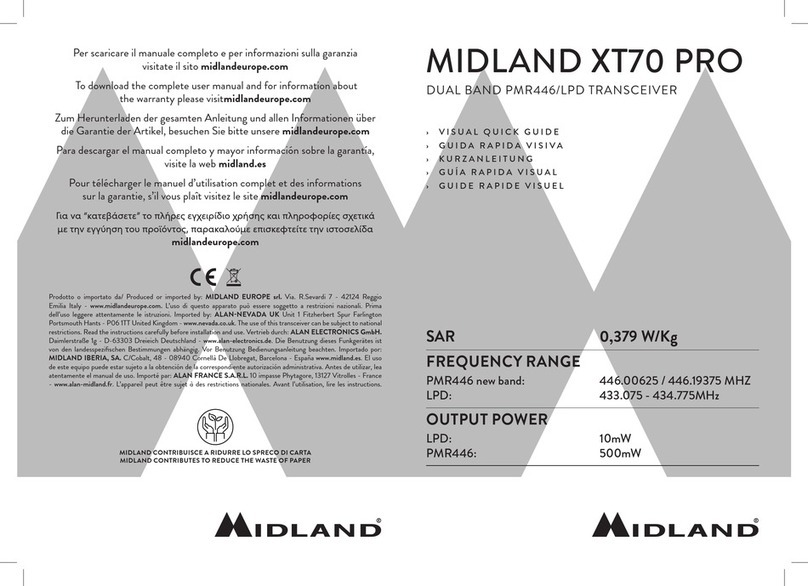
Midland
Midland XT70 PRO quick guide
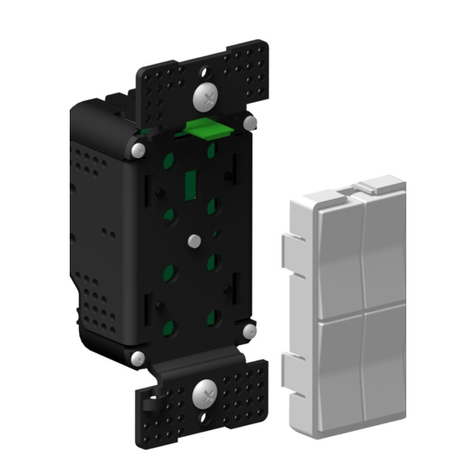
Simply Automated
Simply Automated SimplyBrilliant US22-40 quick start guide
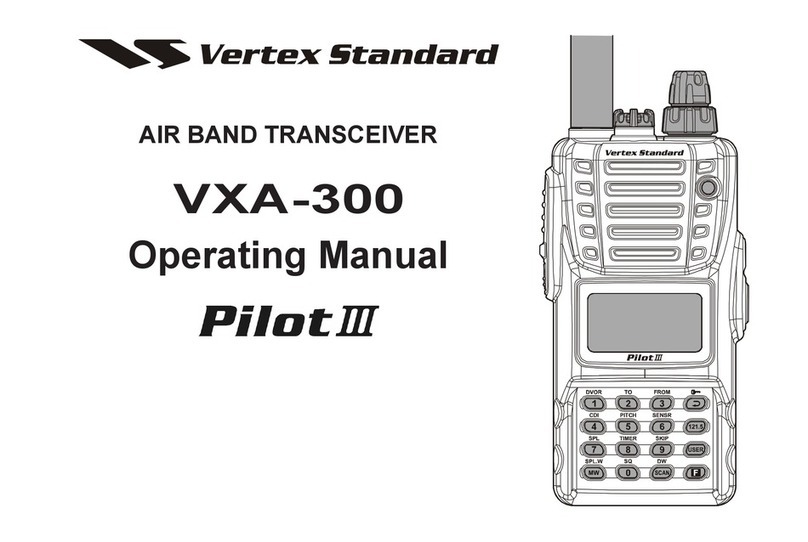
Verterx Standard
Verterx Standard VXA-300 Pilot III operating manual
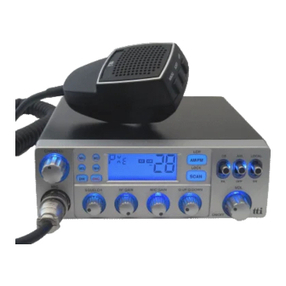
TTI
TTI Freequency TCB-880 Service manual

Kenwood
Kenwood TW-4100A instruction manual
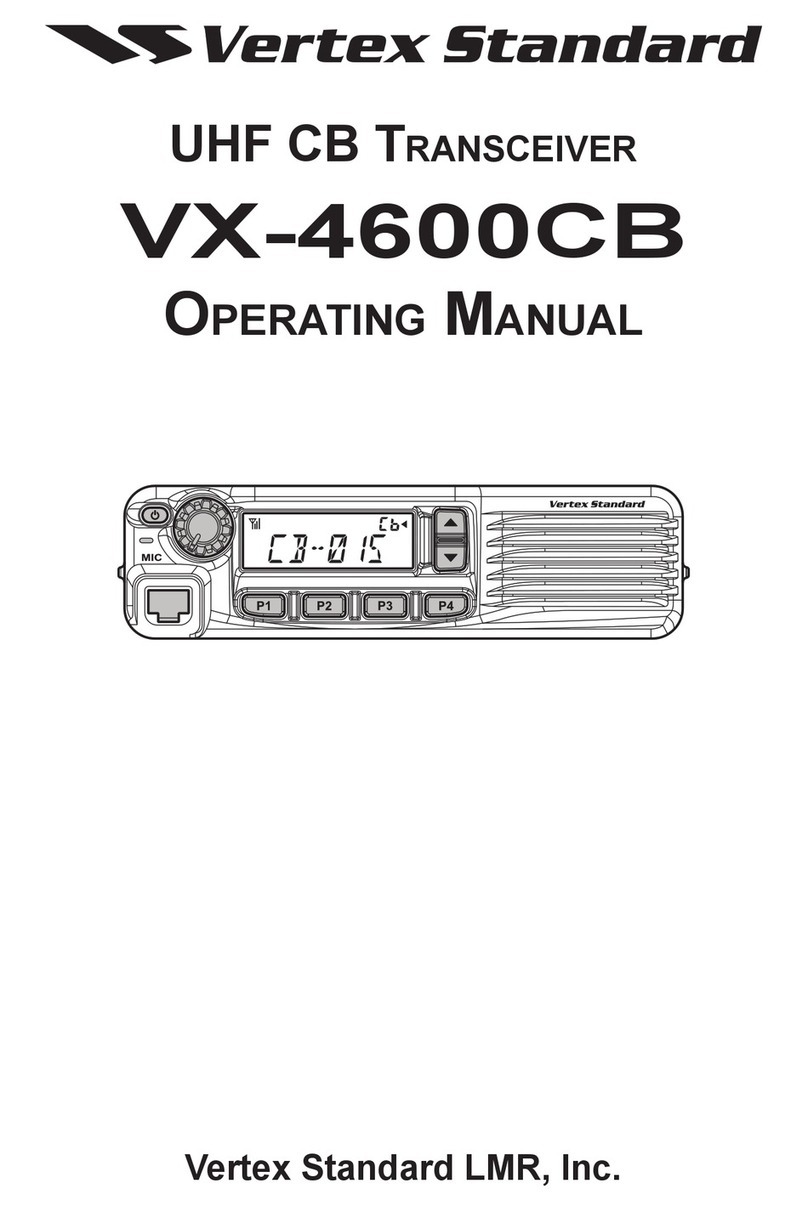
Vertex Standard
Vertex Standard VX-4600CB operating manual
